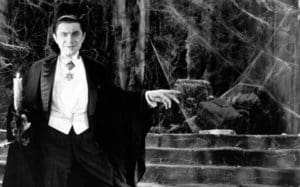Unravelling Irish Folk Practices and Superstitions: Your Comprehensive Guide to the Mystical and Mundane

Updated On: April 23, 2024 by Raghda Elsabbagh
Irish culture is woven with a rich tapestry of folklore and superstitions that have been passed down through generations. These stories and beliefs, once preserved in rural areas, are a testament to Ireland’s cultural heritage and offer insight into the values and perceptions of the Irish people. Traditional Irish folklore encapsulates an array of customs ranging from the mystical to the everyday, from the well-intentioned practices aimed at warding off the ‘evil eye’ to communal gatherings filled with music that reinforce social bonds.

Our understanding of Irish folk practices and superstitions is not merely an academic pursuit but a journey into the heart of what it means to be Irish. Delving into the folk beliefs of Ireland reveals the significance these stories hold in the collective conscience. They are more than quaint tales; they often embody the wisdom of ages and reflect the intricate interplay between the mystical and the mundane in daily life. Myths about mythical creatures like the Aos Sí, rituals rooted in Christianity, and superstitions that influence contemporary life all play a role in shaping the shared identity of the Irish people
Table of Contents
The Fabric of Irish Folk Practices and Superstitions
Irish folklore is not just a chronicle of whimsical tales; it’s a pivotal part of our cultural tapestry. It encapsulates a myriad of beliefs, rituals, and tales that are steeped in the history of Ireland.
Historical Context
At the heart of Irish folklore lies a complex history that intertwines with pagan origins and the arrival of Christianity. The work of folklorist Dáithí Ó hÓgáin offers profound insights into the evolution of these stories, which often served as a bridge between ancient and modern traditions. This folklore encompasses everything from epic sagas to modest customs that collectively form a vital component of our heritage. Ireland’s rich folklore tradition is characterised by narratives that preserve the collective memory and affirm our identity.
Myth Vs. Reality
Breaking down the barrier between myth and reality in Irish folklore reveals the nuances of our cultural ideology. Many of the supernatural elements like the fae, banshees, and leprechauns that dominate the world’s perception of our folklore have tangible origins in past pagan beliefs and societal values. These tales reveal the moral frameworks and existential answers sought by our ancestors. The aforementioned entities were not solely mystical but served as moral allegories and reflections of societal norms. Decoding Irish folklore demands appreciation for the allegorical rather than a literal interpretation of the fantastical.
Common Irish Superstitions
We delve into the fabric of Irish culture to explore two common Irish superstitions that have transcended time, whispering tales of omens and foretelling fortunes with the smallest signs.
Banshee and Death Omens
The banshee is one of the most chilling figures within Irish superstitions. She is known as a foreteller of death; her mournful wail is believed to signal the impending passing of a family member. This spectral woman, draped in white, is often seen or heard at night near the home of someone who is about to die. Not every family is said to have a banshee, but for those who do, her cry is a sombre omen of loss.
Itchy Palms and Economic Predictions
Itchy palms have long been associated with a forthcoming financial change in Irish folklore. If your right palm itches, it suggests that you will soon come into money. Conversely, an itchy left palm is a warning that you may be about to lose money. While there’s no empirical evidence to support palm-itching as a method of economic prediction, many still find a little hope or caution when their palms begin to tingle.
Folk Beliefs and Their Significance
We explore how traditional beliefs weave into the fabric of daily life, often guiding decisions with notions of luck and protection. These customs, a blend of ancient wisdom and old wives’ tales, remain ingrained in the cultural consciousness.
Luck and Ill Fortune
Folk beliefs often distinguish between actions and omens that bring good luck and those foretelling bad luck. For instance, it is considered lucky to encounter certain animals or to find a four-leaf clover. Conversely, breaking a mirror or walking under a ladder might attract misfortune. These tokens of fortune and the fear of impending misfortunes are evident in daily habits and rituals, ingrained in the mindset from generation to generation.
The Evil Eye and Protection Charms
The evil eye—a malevolent glare believed to cause harm—is a prevalent concept across various cultures, including Ireland. To counteract this, protection charms, such as horseshoes and Saint Brigid’s Cross, are commonplace in homes to ward off harm and shield residents from any malignant forces. This battle against unseen negative energies showcases the enduring belief in the power of protective symbols and the subtle ways these customs persist in contemporary society.
Irish Language and Superstitions
In our exploration of Irish superstitions, the Irish language itself holds deep significance, often intertwined with enchantments and omens.
The Power of Words
The Irish language has a rich repository of words that are more than mere communication tools. Seanchaí, or traditional storytellers, wove a tapestry of folklore where language itself often had mystical properties. It’s through these tales that we learn of spells that could both bless and curse, hinged upon words delivered with intent. Soothsayings, or prophetic pronouncements, were typically phrased in Irish and were believed to carry a certain power when spoken aloud.
Names and Their Weight
Names in Ireland come with a potent sense of identity and magic. A commonly held belief was that knowing the true name of a person or creature granted power over it. This tradition reflects a wider reverence for names, wherein even uttering the names of certain otherworldly entities was avoided to prevent unwanted attention. Fairy forts and beings like the banshee were often alluded to using euphemisms or descriptive titles rather than actual names, underscoring the weight that language carried within Irish traditions.
The Interplay of Irish Folklore and Christianity
Irish folklore and Christianity have been intertwined for centuries, with the latter shaping and often incorporating elements of the former. As we explore this complex relationship, we’ll see how pagan origins have merged with Christian beliefs, creating a tapestry of cultural heritage that persists in Irish traditions today.
Christian Belief Influence
The influence of Christian belief on Irish folklore has been profound. Numerous pagan practices were adapted to fit the Christian framework, leading to a fascinating blend of the old and the new. For instance, Bealtaine, the fire festival celebrating the beginning of summer, was repurposed into a Christian context, transforming into a time to protect cattle, which were a crucial part of cultural heritage. This custom was not only practical but also symbolic, signifying divine protection over the community’s livelihood.
Saints and Folk Practices
Christianity introduced the veneration of saints, who often took the place of pagan gods in the people’s devotion. Many saints became central figures in Irish folklore, imbued with powers and stories that echoed their pagan predecessors. St. Brigid is a notable example; she shares many attributes with the Celtic goddess Brighid, overseeing areas such as healing, poetry, and smithcraft. Festivals and folk practices celebrate her feast day on 1 February, blending Christian beliefs with older traditions.
In summary, the interplay of Irish folklore and Christianity has shaped a unique cultural heritage, where pagan origins are not entirely lost but rather transformed, continuing to influence contemporary practices and beliefs.
Mythical Creatures and Irish Folk Tales
We’ve long been fascinated by the fantastical beings that dance through the pages of Irish folklore. Embedded within these tales are not just marvellous stories but reflections of Ireland’s rich cultural heritage.
Leprechauns and Wealth
In the emerald heart of Irish folklore, leprechauns are synonymous with luck and riches. These solitary creatures, cobblers by trade, are said to possess hidden pots of gold. A captured leprechaun might grant you three wishes or lead you to his treasure, but be wary, for they are known to be cunning and elusive.
Fairies and Fairy Forts
The fairies of Ireland, honoured as the ‘Aos Sí,’ are considered both protective and vindictive. To disturb a fairy fort—ancient rings found across the Irish countryside—is to invite misfortune. It is our belief that these forts are gateways to the fairy world, and as such, they remain untouched out of respect for the fair folk.
Sprites and Ghosts
Lastly, the night in Ireland is often whispered to belong to the sprites and ghosts of folklore. From mischievous spirits to anguished souls, these phantoms exemplify the more ethereal aspects of Irish culture. Though less tangible than our storied landscape, the presence of these spectral entities is no less a part of our shared narrative.
In weaving these tales into the fabric of everyday life, we keep alive a tradition as verdant as the Irish hillsides and as deep as our centuries-old customs.
Rituals of Love and Friendship
In Irish tradition, the rituals of love and friendship are deeply woven into the social fabric, expressing community and continuity through customs rich in sentiment and purpose.

Matchmaking Customs
The art of matchmaking holds a revered place in the Irish tradition of love, relying on well-established customs to kindle romance and lifelong partnerships. Celebrated gatherings like the Lisdoonvarna Matchmaking Festival attest to the enduring popularity of such social practices. Here, matchmakers would employ their keen intuition to pair individuals, focused on compatibility and the prospect of a prosperous union.
Expressions of Affection
Expressions of affection in Ireland travel the spectrum from grand romantic gestures to simple yet profound acts that signify trust and intimacy. A Claddagh ring, for instance, captures this spectrum beautifully: wear it on your right hand with the heart facing outwards to signal you are single; turn it inwards to show you’re not seeking love. As friendship and love intertwine, exchanging tokens such as the Claddagh represent commitment and connection, bound in tradition and lasting significance.
Arts, Music, and Folk Traditions

We find that Irish folk practices and superstitions trickle profoundly into the arts and music, showcasing a country rich in cultural heritage. These expressions are not only a testament to tradition but also to the vibrant continuation of storytelling and communal identity through the arts.
Storytelling and Dance
Storytelling in Ireland is an enchanting tapestry woven from the threads of myth and history, often accompanied by the lively footwork of traditional dance. The seanchaí, or storyteller, holds a revered place in Irish culture, preserving and passing down stories that have shaped our understanding of the world. Dance forms like the Irish jig and céilí transform narratives into movement, echoing the cadence and rhythm of ancient tales through expressive choreography.
Instruments and Folk Music
The undeniable heartbeat of Irish cultural heritage lies within its music. Traditional instruments such as the uilleann pipes, fiddle, and bodhrán breathe life into melodies that have been carried across generations. Our folk music is a celebration of our identity, underscored by the emotive strumming of the Celtic harp and the vibrant plucking of the mandolin. These sounds, interwoven with haunting ballads and exuberant reels, encapsulate the essence of Ireland’s soul.
Irish Traditional Wisdom

In exploring Irish traditional wisdom, we delve into the customs and beliefs passed down through generations. This wisdom encompasses both the mystical elements of Irish superstition and the practical morals found in proverbs and sayings.
Wise Women and Curses
Wise Women, often known as “Bean Feasa” in Gaelic, have long held a significant place in Irish culture. They are credited with possessing knowledge of healing herbs and the power to lift or bestow curses. These wise women were frequently consulted for their knowledge of folk medicine and their ability to protect against or remove curses inflicted by those harbouring ill will.
- Folk Beliefs: Centred around the wise women were numerous folk beliefs. An example is the belief that certain individuals could cast an evil eye, resulting in misfortune or illness. To counteract this, wise women employed various protective charms and rituals, which are still remembered in some rural communities today.
Proverbs and Sayings
Irish proverbs and sayings encapsulate the collective experience and ethics of the people, often reflecting a blend of wit, wisdom, and local observations.
- Simplistic Truths: Expressions like “Níl aon tinteán mar do thinteán féin” (There’s no fireplace like your own) convey the significance of home, while “Ar scáth a chéile a mhaireann na daoine” (People live in each other’s shadows) emphasises community interdependence.
- Moral Guidance: The sayings often serve as moral compasses, for instance, “Mol an óige agus tiocfaidh sí” (Praise the young and they will flourish), encouraging positive reinforcement in raising children.
In these concise expressions, one finds the distillation of Irish wisdom; a reservoir of guidance and reflection that spans from the everyday mundane to the deeply philosophical.
Superstition in Daily Irish Life

In Ireland, superstitions are intricately woven into the fabric of daily life, shaping the mundane to the mystical, with ordinary items often taking on extraordinary significance.
Household Beliefs
In our homes, simple objects can carry surprising weight in the landscape of Irish superstitions. A dropped comb may prompt expectations of a quarrel, while a fallen knife points to a male visitor arriving. Coins are frequently esteemed not just for their monetary value but also for their ability to bring prosperity; finding a coin is seen as a sign of incoming wealth. Misfortune is often kept at bay by adhering to beliefs such as never placing a chair with its back facing the door or ensuring that a looking glass is swiftly replaced if broken to avoid bad luck.
Good-Luck Charms and Their Uses
Irish good-luck charms are as diverse as they are prevalent. One of the most cherished is the humble coin, often kept in a purse to ensure continuous wealth. Such talismans are a blend of Celtic myth and Christian elements; for instance, St. Patrick’s medals or shamrocks are carried for divine protection and to secure good fortune. A common practice involves tucking charms under pillows or in pockets, affirming a silent plea for luck in everything from personal endeavours to momentous life events.
Contemporary Superstitions and Practices
In Ireland, the blend of ancient superstitions and modern practices creates a unique tapestry that continues to colour our cultural heritage. We see traditions adapting, yet the core of Irish superstition often remains, showcasing the resilience and adaptability of our beliefs in the face of modernity.

Modern Adaptations
We find that Irish superstitions have smoothly transitioned into the current era, interweaving with our daily routines without losing their essence. An often-cited superstition is avoiding walking under ladders, which many still observe, acknowledging it as a nod to avoiding bad luck. On New Year’s Eve, it is customary for Irish families to open their front door at midnight to let the old year out and the new year in, symbolising a fresh start and the continual flow of time and tradition.
Superstitions in the Digital Age
With the digital revolution has come a new landscape for traditional beliefs. It’s not uncommon for folk in Ireland to share tidbits of superstition over social media platforms, echoing ancient customs in a modern form. For instance, we notice sentiments such as “knock on wood” becoming prevalent in digital conversations when hoping for good fortune or to ward off bad news. This act is a virtual equivalent of the physical gesture, preserving its intended purpose to bring about luck or protection.
Our identity and how we interact with superstitions have inevitably evolved, yet our reverence for these practices remains a testament to the enduring nature of Irish culture and tradition.
Frequently Asked Questions
In this section, we answer some of the most commonly posed questions about Irish folklore, touching upon age-old superstitions and traditions still whispered across Ireland today.
What are some common superstitions surrounding birds in Irish folklore?
Birds hold significant meaning within Irish folklore, often heralded as omens. For example, the wren is celebrated on St. Stephen’s Day, as it’s believed to symbolise the old year.
How do fairies feature within the beliefs of Irish superstitions?
Fairies, known as the ‘Aos Sí‘, are central to Irish mythology and regarded as powerful beings who could bless or curse mortals. Fairy forts are especially revered as their sacred dwellings.
Are there any traditional practices in Ireland to ward off bad luck?
Indeed, numerous practices exist, such as turning one’s clothes inside out to prevent fairy kidnapping and placing an iron horseshoe above the door to protect the home from evil spirits.
In contemporary Ireland, is there a continued belief in the supernatural?
While modernity has diluted much of the belief in the supernatural, certain customs and superstitions linger, particularly in rural areas where traditional tales are passed down through generations.
What is considered to be the most ancient myth in Irish tradition?
The most ancient Irish myth is likely the story of the Tuatha Dé Danann, the mythical race said to have inhabited Ireland before the arrival of humans, leaving behind a rich tapestry of mystical lore.
How does Irish folklore interpret the appearance of a bird inside a house?
The sudden appearance of a bird indoors, particularly a robin or a wren, can be seen as an omen; it is often interpreted to foretell death or significant change depending on the specific bird and circumstances.






